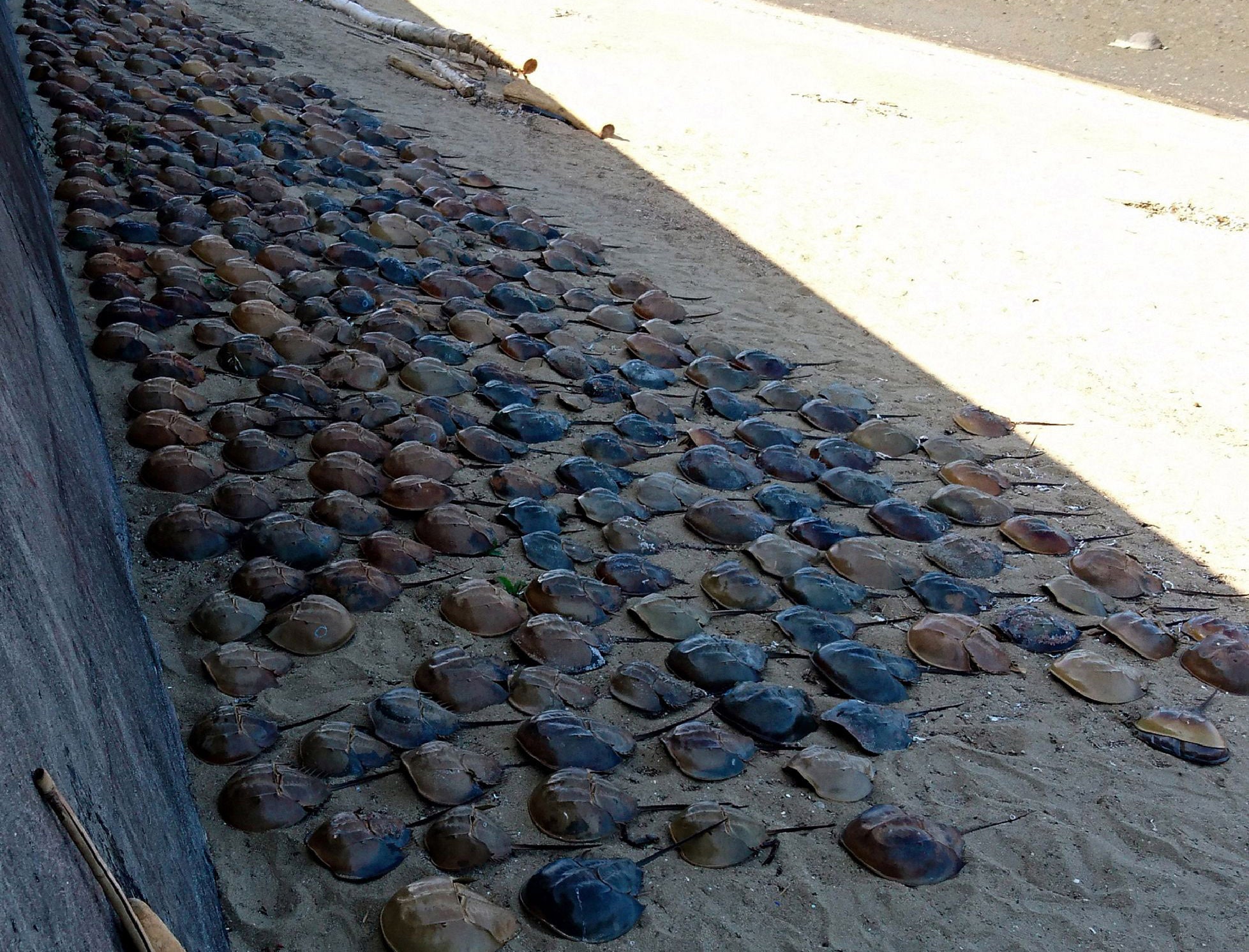Mystery over hundreds of horseshoe crabs washed up on Japanese beach
The sudden increase in the death rate could be due to rising sea temperatures or a shortage of food

Your support helps us to tell the story
From reproductive rights to climate change to Big Tech, The Independent is on the ground when the story is developing. Whether it's investigating the financials of Elon Musk's pro-Trump PAC or producing our latest documentary, 'The A Word', which shines a light on the American women fighting for reproductive rights, we know how important it is to parse out the facts from the messaging.
At such a critical moment in US history, we need reporters on the ground. Your donation allows us to keep sending journalists to speak to both sides of the story.
The Independent is trusted by Americans across the entire political spectrum. And unlike many other quality news outlets, we choose not to lock Americans out of our reporting and analysis with paywalls. We believe quality journalism should be available to everyone, paid for by those who can afford it.
Your support makes all the difference.Hundreds of horseshoe crabs have washed up dead on a beach in southern Japan, leaving experts mystified.
The blue-blooded creatures arrive on the shore in southern and western Japan each year to lay eggs, and it is normal for some to die.
But this year the death rate has been more than eight times higher than normal, according to the Japanese newspaper Asahi Shimbun.
Usually around 50 to 60 dead horseshoe crabs are found on the Sonehigata tidal flats, but 490 have already been discovered this year.
Hiroko Koike, a researcher at the Kyushu University Museum who studies horseshoe crabs at Sonehigata, told the newspaper: “Rises in the sea level caused by global warming, shortages of places to lay eggs and a lack of nutrition could have resulted in their deaths.
“We have to be careful to identify the cause.”
The dead crabs first started appearing in January, a time when the crabs are usually dormant, according to Shungo Takahashi, head of a local branch of an organisation that strives to protect the species.
He told the paper the number of dead crabs started increasing around late June and continued to rise in July and August, adding that more than 10 dead crabs had been found on some days.
Mr Takahashi estimated there were 2,400 horseshoe crabs at the tidal flat this year, meaning the dead 490 crabs accounted for 20 per cent of that population.
According to the Fukuoka Fisheries and Marine Technology Research Centre, the seawater temperature off Fukuoka Prefecture this summer was one degree higher than usual, which has been put forward as a reason for the high number of deaths.
Join our commenting forum
Join thought-provoking conversations, follow other Independent readers and see their replies
Comments